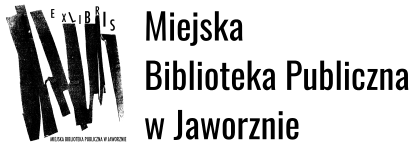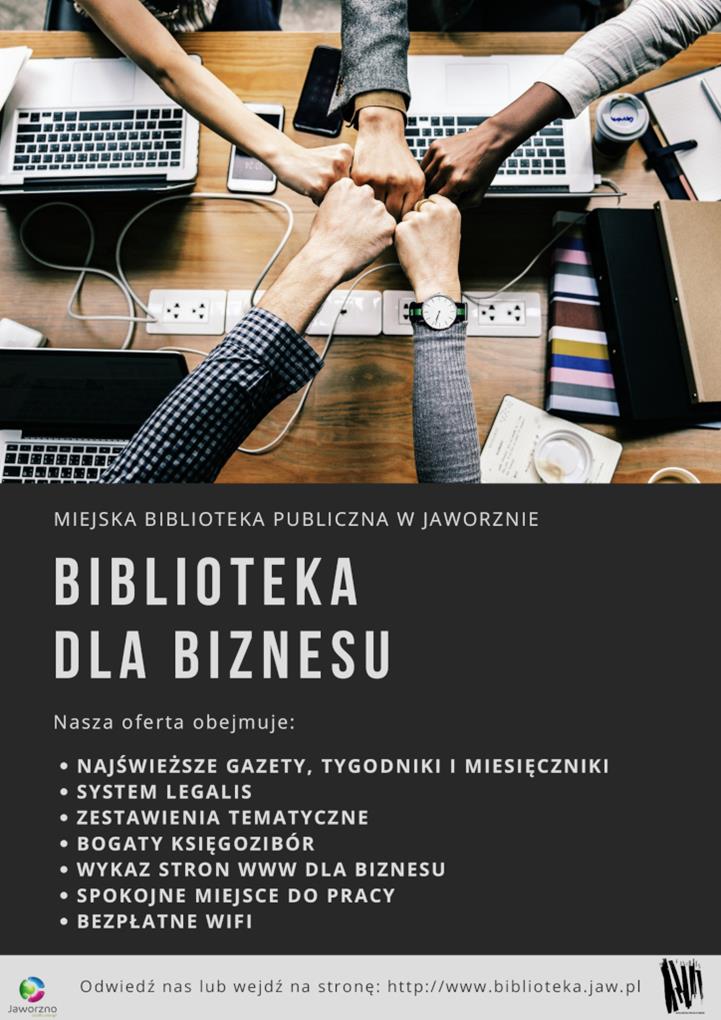Les jeux de la mort et de l’espoir : Auschwitz-Jaworzno / Henry Bulawko
préf. de Jean-Maurice Hermann. Paris :Amicale des Ancien déportés juifs de France, 1954, II Ed. 1993.
https://www.nli.org.il/en/books/NNL_ALEPH001940813/NLI
Rejestr Żydów mieszkających w: Jaworzno, Wojtostwo Grabowskie, Kępno, Konopnica, Kobyle(pow. Olkusz), Kraszewice, Kruszyna, oraz regestr obrzezania, ślubów i pogrzebów w m. Kepno.:CopiedMaterialat CAHJP — Poland – Copied Material — Archiwum Główne Akt Dawnych (AGAD), Warszawa – Copied Material — Komisja Porządkowa Cywilno-Wojskowa ziemi wieluńskiej i powiatu ostrzeszowskiego, Archiwum Główne Akt Dawnych, Warszawa 1790-1791.
https://www.nli.org.il/en/archives/NNL_CAHJP004336218/NLI
By bread alone : the story of A-4685 / by Mel Mermelstein. Mel Mermelstein; Huntington Beach, Calif : Auschwitz Study Foundation 1981.
https://www.nli.org.il/en/books/NNL_ALEPH001025513/NLI
Memories, dreams, nightmares : memoirs of a Holocaust survivor / Jack Weiss. Calgary, Alta : University of Calgary Press 2005.
https://www.nli.org.il/en/books/NNL_ALEPH002485010/NLI
Comme un feu brûlant :expérimentationsmédicales au camp de Sachsenhausen : témoignage / Saül Oren-Hornfeld. Paris :L’Harmattan, 1999.
https://www.nli.org.il/en/books/NNL_ALEPH001993204/NLI
Auschwitz : mein Bericht / Jean Heinemann ; aus dem Französischen übertragen von Christel Dobenecker und mit einem Vorwort versehen von Mona Körte. Jean Heinemann 1909-;Berlin : Verlag Das Neue Berlin 1995.
https://www.nli.org.il/en/books/NNL_ALEPH001359695/NLI
The boxer : the true story of Holocaust survivor Harry Haft / Reinhard Kleist. London SelfMadeHero 2014.
https://www.nli.org.il/en/books/NNL_ALEPH990047763570205171/NLI
Der Boxer : die wahre Geschichte des Hertzko Haft : nach dem Buch Eines Tages werde ich alles erzählen von Alan Scott Haft / Reinhard Kleist. Hamburg : Carlsen 2012.
https://www.nli.org.il/en/books/NNL_ALEPH990047763570205171/NLI
Harry Haft : Auschwitz survivor, challenger of Rocky Marciano / Alan Scott Haft ; with forewords by John Radzilowski and Mike Silver. Syracuse, N.Y : Syracuse University Press 2006.
https://www.nli.org.il/en/books/NNL_ALEPH002569289/NLI
La vie à bout de bras :unetranche de vieexemplaire (1936-1945) / Jean-Baptiste Debéron. Paris :Éditions des Écrivains 2001
https://www.nli.org.il/en/books/NNL_ALEPH002216934/NLI
A life sentence of memories :Konin, Auschwitz, London / Issy Hahn ; with a foreword by Theo Richmond.LONDON :Vallentine, Mitchell, 1969.
https://www.nli.org.il/en/books/NNL_ALEPH002141943/NLI
Nagrania – historia mówiona
Kerstenberg Archive – Depositions. Lena Klein was born in Jaworzno, Poland, in 1934. She was interviewed by RozaBauminger in Krakow in 1949. In her interview she mentioned Fela Broner, Jakub Hersztal, Agnieszka Malisz
https://www.nli.org.il/en/audio/NNL_ALEPH004426061/NLI
Kerstenberg Archive. PC was born in Lvov, Poland in 1909. She was in the Lvov Ghetto and in the Jaworzno labor camp. She also was in hiding. She immigrated to the USA and lives in Pt. Washington, NY. Kerstenberg, Judith Interviewer 1987.
https://www.nli.org.il/en/audio/NNL_ALEPH004425692/NLI
Kerstenberg Archive. MOH was born July 2, 1928 in Jaworzno, Poland, the only child of a miner and his wife, a housewife. She had a happy childhood and had finished 4th grade by the time the war began. At the start of the war, her mother made sure there was food and clothing for them, gathering plants from the forest and bartering clothing. Her mother sometimes sent her to the ghetto with supplies for some Jewish friends. Ration cards were necessary for buying food, but children were often given food and cards for free. On March 13, 1943, the Gestapo arrested store storeowners in Jaworzno and sent them to Auschwitz. On that same day, MOH and other children were also arrested. She and her friend, Gusta, saw what was happening and ate the ration cards, but were still arrested and were severely beaten. Most of the children were sent to a camp in Myślenice, then later to Lodz. However, MOH was one of those sent to Auschwitz. She remembers very clearly entering the gates of Auschwitz on April 2, 1943, then being sent to Birkenau, where she said she entered Hell – beatings, being stripped naked, examinations by doctors, selection, being photographed, being tattooed, given nothing to eat or drink, being given one blanket for 5 people. From that first night, she had bad dreams. She clearly described life in the camp, the unsanitary conditions and the lack of everything, and the dogs who attacked and even killed inmates on the SS men’s commands, and the huge rats that were everywhere, which spread plague and typhus. The prisoners all lived under the constant threat of death. Until summer 1943, there were few children in the camp. She and her teenaged friends were among the youngest prisoners, and they were sometimes given milk and vegetables. In July 1943, she was interrogated by an SS man, and she began praying as hard as she could because she was certain she was going to die. However it turned out that she was being sent to a camp for youngsters. In the meantime, her mother was informed she had died, which resulted in her father dying of a heart attack. From her barracks she had a clear view of the trainloads of Jews and of the smoke from the crematoria. She and her friend were assigned to go through the suitcases of Jews and sorting out their possessions. Before leaving Auschwitz, they were forced to sign a form that nothing abnormal occurred there. Therefore, when questioned by inmates at the camp in Lodz, they lied and said that the conditions were good in Auschwitz. Shortly afterwards she was sent to a camp at Dzierzazna, from which she was freed in October 1944. The camp director’s wife had walked in on her husband’s attempted rape and abuse of MOH which led to her being sent back to the camp at Lodz and ultimately freed. When she returned home, her mother was in shock, since her mom thought that she had died. ; After her return home, she suffered from physical and psychological illnesses which were a direct result of her imprisonment. She also suffered with nightmares. She blames all of her problems on the Germans whom she hates intensely. MOH OHD interviewee; Witkowski, Jozef OHD (interviewer) ; February 21,1988.
https://www.nli.org.il/en/audio/NNL_ALEPH004425293/NLI
Kerstenberg Archive. Język oryginalny wywiadu – j. polski – skany maszynopisu, część stron jest dostępna online. K.S. was born in Jaworzno on 9,4, 1931. She had a very happy childhood until the War. As the war proceeded they suffered from hunger and every week the mother used to go to BielskoBiale and buy some food on the black market. Once the mother was caught and severely beaten by the Germans although she was pregnant. On March 13 1943 KS was sent to find some food. The Germans surrounded the Bielsko Białe rail station and arrested everybody. KS was heavily beaten, interrogated and then accused of being a part of a gang which stole German food cards. She was sent to a camp in Mysłowice which was part of the Gestapo in Katowice. She saw many people tortured. As they lived close to Auschwitz, she smelt the smell of burnt people; the Germans didn’t conceal their deed. On the contrary, they threatened them that they be sent there. At the end of April 1943 she was sent to the youth camp in Lodz. Since she was young and very small, she worked in cleaning the camp and in preparing bags. Nevertheless she suffered much from beating, hunger and torture by the manager Bayerowa and Pohl. ; She was longed for and dreamt about home. Once her mother was allowed to visit her and she succeeded in whispering the truth about their situation, even though it was strictly forbidden. She received a package from home but was forced to give the best part to the personell. KS was sent to Dzierzaznia which was a farm and a part of the Lodz camp. The work there was very difficult, but they got a little bit more food. She believed that being there saved her life. The Germans released her on July 20 1944. She was ill for years, couldn’t reach a physical and psychological balance. She was married but couldn’t have children . Although she was a good student before the war, she suffered from many learnlng difficulties after it. She finished high school, but was constantly ill and had nightmares. The authorities gave her being invalid class 2 status and she was diagnosed with KZ Syndrome. She said that the Germans had to be severely punished for their crimes against the mankind. She knew that Bayerowa was hung and Pohl was sentenced to 25 years in prison. Interviewer: Józef Witkowski 31may 1986.
https://www.nli.org.il/en/audio/NNL_ALEPH004424523/NLI
Kerstenberg Archive. EL was born in Uzhgorod, Czechoslovakia (now Ukraine), the youngest boy of a family of ten children (a number of them died young, before the war began). His family was very religious. His mother had an embroidery shop and his father was a shoemaker. EL was eleven when the war broke out. He went to school until age fourteen. He explains that life went on as usual until 1942 when the Germans occupied the country. EL’s two older brothers were taken to labor camps and the Jewish owned stores were closed. In 1944 the remaining family was placed in a brick factory that served as a ghetto. In May 1944, EL and his family was deported to Auschwitz. After two days EL was transferred to Birkenau. 10 days to two weeks later he was deported to Jaworzno labor camp and EL volunteered to work as an electrician. In December 1944, EL and the inmates were sent on a Death March. EL describes his experiences on the march in detail. He eventually escaped from the march by hiding on a rooftop which he reached during an air raid. After this he was given a ride to the closest town by a Pole. ; He was dressed as a civilian with clothing that he had collected over time in the labor camp. He stayed with Poles who were working for the Germans and trying to escape the Russian front. He pretended that he was a non-Jewish Czech. He was there for a month and a half until the Russians defeated the Germans in April. Right after liberation EL worked as an interpreter for the Russian army. After that he managed to reach Prague where he found one of his brothers. He became involved with the Jewish Brigade and reached Eretz Israel in 1946 on a cargo ship. After being imprisoned by the British, EL was allowed to go to Kibbutz Tel Amal. After four months he moved to Tel Aviv where he graduated high school and in 1947 he moved to Haifa and joined the Israeli army during the War of Independence as a merchant marine. In 1951 EL moved to Chicago, where his sister was, then to Los Angeles, and then back to Chicago when his two brothers joined them. He married and had two daughters in Chicago and then moved to Puerto Rico and in 1962 to Miami, Florida. He spoke to his children about his experiences in the Holocaust, but only when they were older. EL suffered from concentration troubles. He describes that he is content and happy that he survived, not only in body but also in mind. He can get easily upset and sometimes angry. He has suffered from nightmares in the past, usually during peaceful and non-eventful times. Including EL, five of the siblings survived and they all live in Chicago. Interviewer JK OHD 4-6 February 1990.
https://www.nli.org.il/en/audio/NNL_ALEPH004425369/NLI
Kerstenberg Archive. Język oryginalny wywiadu – j. polski – skany maszynopisu, część stron jest dostępna online. AS was born in Jaworzno on January 21 1929. During the war her entire family (parents and sisters) were active in the black market of ration cards, as well as bringing provisions to the partisans and to people in hiding. Her mother and two sisters smuggled food to the Jews in the Chrzanów Ghetto, as well as smuggling ration cards to Jews in hiding. Suspected of illegal activities, AS was arrested at the train station in Bielsko-Biała on the 13th of March 1943 together with another fifteen children. They were taken to the local Gestapo headquarters. AS remembers being constantly interrogated and beaten during her three weeks there. Her mother and two sisters were in hiding but AS revealed nothing. On the 2nd of April, she was taken to Auschwitz. The number 39440 was tattooed into her left forearm and she wore the red triangle marking of a political prisoner. AS was taken to Barrack 2 where she had to share a bunk with another four people. Sometimes at night SS officers would enter the barrack with huge and aggressive dogs. From that time and to this day AS is afraid of dogs and gets very nervous around them. Each morning at 6 am there was assembly where they had to stand in rows of five for an average of two hours. At the time AS worked intermittently with cleaning the camp or sorting huge amounts of clothes from the prisoners. Occasionally she had to get rid of a corpse. To this day AS is traumatized by the cheerful music that the Women’s Orchestra had to play and that she would hear, returning from work. As Barrack 2 was close to the kitchens AS was able to receive some extra food from the cooks. When AS got sick with putrid fever she was taken to Barrack 29, the sickbay. While at Barrack 2, AS had at one point sneaked out past 21 o’clock and had seen how people who had died in the sickbay were transported away. To her horror she had noticed that there were patients who were still alive; among the dead bodies and so she was terrified when taken to Barrack 29. At sickbay AS spent most of her time sleeping. She fondly remembers being helped by a French nurse, also a prisoner. From Barrack 29 she was eventually taken to Barrack 17, for recuperating patients. From there she was moved to Barrack 3 or 5. After the bout with putrid fever, AS worked exclusively with unpacking suitcases and sorting clothes, suitcases that had been taken from Jews upon entering Auschwitz. ; AS vividly and with horror remembers seeing how Jews, properly dressed, would walk to what would be their death in an orderly fashion. In Auschwitz AS had the opportunity to write several letters to her family and she even received a few packages from them. After the war she realized that they had sent a lot more packages and that the Germans had only let a few of them through. AS was eventually released from Auschwitz. Before her release she spent some time in a different house, where she wore civilian clothes, ate better food and had better sleeping conditions. This house was on the other side of the fence, in front of the main gate, in the area where today (in 1986) there’s a RUCH kiosk. AS and another prisoner were taken to Łódź, to the Polen Jugendverwahrungslager. AS remembers spending approximately 2 months in Łódź and she remembers having to work harder than in Auschwitz. In Auschwitz the older prisoners often helped the youth, such as herself; while in Łódź there were no older prisoners to lend a hand. She also remembers being beaten much more in Łódź than in Auschwitz. All in all she considers the conditions she had in Łódź as worse than those she had in Auschwitz. AS was eventually moved to the camp in Dzierżązna, a sub-camp of the Łódź one. There she had to work hard in the fields but there were advantages, such as being able to eat fruits and vegetables in the fields, as well as sometimes drinking whole milk. In 1944 AS’s father also arrived in Dzierżąna. AS complained that after the war she had difficulty returning to certain parts of her life. She had difficulty concentrating and succeed well in school. In Auschwitz and in Łódź she had often been beaten on the head. AS was able to hide a diamond ring that she had found among the clothes she had sorted in Auschwitz throughout the entire war. Interviewer Witkowski, Józef OHD September 21, 1986.
https://www.nli.org.il/en/audio/NNL_ALEPH004424607/NLI


